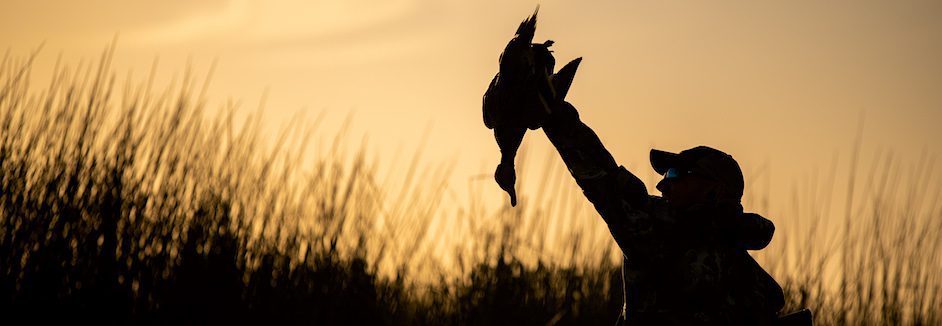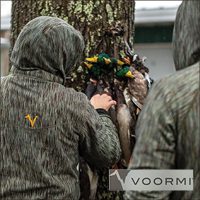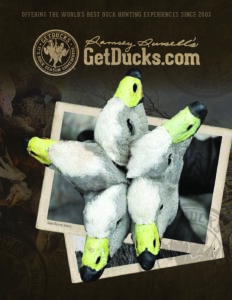Fulvous Whistling Duck
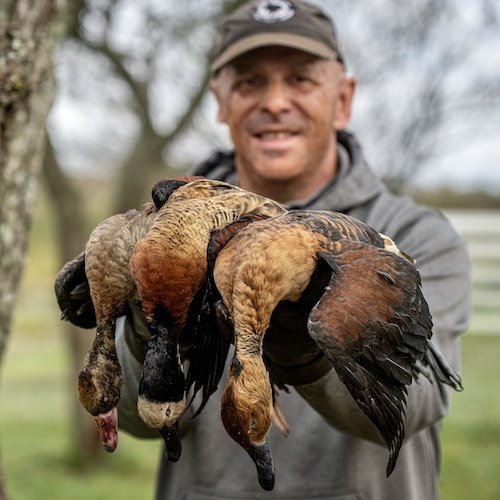
Fulvous Whistling Duck (Dendrocygna bicolor) is described as having goose-like posture due to their unusually long necks and legs. Drakes and hens are monomorphic (virtually identical) with grey-blue bills, legs and eye-rings. Overall rich chocolate-colored plumage covering back, rear, tail. with white uppertail coverts patch separating rear and tail. Tawney-buckskin colored belly and nape blending stripe-like into the chocolate back portions. Striking, elongated, buff-colored flank feathers forming intermittent streaks on the side pockets. Fulvous whistling duck wings covert is rich cinnamon, the remainder is black. Dark feather line running down the crown to the neck is only continuous on females. Throats striated gray and white. They’re extremely vocal while feeding and in flight, making high-pitched k-weeooo and k–ees.
Fulvous whistling ducks have incredible 4-continent distribution, but only one subspecies is recognized worldwide. In North America, some fulvous whistlers will remain in the same area year-round along the coasts of Mexico and Florida. Those that do migrate for the breeding season are found mostly in Texas and Louisiana, with a few supposedly found in southern California. This species readily reacts to change in water levels and will also often migrate well beyond their normal range to find suitable habitat. Pairs of this species, unlike other dabblers, mate for life, sharing the responsibilities of rearing the ducklings.
Available Hunts
-
Argentina Duck Hunt – Parana River Delta
An Argentina duck hunt destined to become absolute legend, the Parana River Argentina duck hunting an immersive adventure in one of the wildest places ever.
...read more- Wildest, most remote duck hunt in Argentina, pure adventure
- Luxury liveaboard accommodations, < 15 minutes from duck blind
- Amazing gourmet meals, excellent wine selection (an Argentina wine tasting offered each week)
- Located about 4-5 hours travel from downtown BA, last 1.5 hours by boat
- Rosy-billed pochards, white-cheeked pintails and teal predominate the bag
- Choose high-volume ducks twice daily, or afternoon golden dorado fishing
Rate: $975 -
Argentina Duck Hunting Las Flores
High-volume Argentina duck hunting is a "real duck hunter's duck hunt" that consistently produces over-the-top action. You've tried the rest, now come try the very best!
...read moreArgentina duck hunting Las Flores is our poster-boy Argentina duck hunt. For over a decade, this operator consistently delivers generous duck limits without fail. Convenient hunt that all duck hunters will enjoy.
- Fun, fast-paced duck hunts, generous limits every single day without excuses
- Tons decoying rosy-bills, all Argentina species available
- Located 5.5 hours from EZE, < 30 minutes to blinds
- Great lodging, superior meals, best-stocked bar in Argentina
- As featured MOJO TV; Wildfowl, Predator Nation, Peterson’s and Trigger, Field & Stream, more
Rate: $1,150 -
Argentina Duck Hunting Rio Salado
High-volume Argentina duck hunting a remote wetland that's well worth the effort.
...read moreArgentina duck hunting Rio Salado for die-hard duck hunters that will go the distance for high-volume shooting, high species diversity, and unspoiled habitat. Welcome to real Argentina.
- NO LONGER BOOKING THIS HUNT!
- Remote 74,000-acre wetland
- 1 hunter per blind unless requested
- Pure duck hunting
- Bilingual hosting for the entire trip
- Featured MOJO TV, Outdoor Life, Wildfowl, Sports Afield
Rate: N/A -
Mexico Duck Hunting Obregon
Mexico duck hunt combo for real duck hunters. All-day hunts for broad variety of Central Flyway and Pacific Flyway duck species.
...read moreMexico duck hunting combo in Obregon is an action-packed “real duck hunters duck hunt” for ducks, doves, options for trophy bass fishing and quail.
- Trophy duck species for nearly all Central and Pacific flyway species to include cinnamon teal, Mexican mallard, more!
- Generous bag limits
- Elegant and Gambel’s quail, trophy largemouth bass fishing options
- Premium, 9-bedroom estancia and unequalled guest services
- Featured – Wildfowl, World of Beretta, MOJO TV, Outdoor Life, NRA Hunter, more
Rate: $4,880 (4-day hunt) -
Mexico Duck Hunting Sonora
Mexico Duck Hunt package is intended for private groups of 4-7 hunters.
...read moreMexico Duck Hunting Sonora Combo was developed at the request of many repeat clients who wanted to enjoy morning Mexican duck hunting, afternoon dove hunts, with their own exclusive groups.
- 4-night, 3-day packages, January-February
- For private groups of 4-6 hunters
- Morning duck hunts, afternoon dove hunts
- Premium, 4-bedroom estancia, all bedrooms with ensuite facilities
- Excellent waterfowl species selection
Rate: $4,080 (3-day hunts) -
South Africa Duck Hunting Combo
BEST South Africa duck hunting combo. Belongs right up there with Mexico and Argentina plus trophy import is possible.
...read moreCombo South Africa duck hunts includes great variety of ducks, geese and upland species, offers an authentic taste of Africa and a refreshingly challenging shotgun adventure. Ramsey Russell worked diligently for years making sure this was the very best South Africa Duck Hunt combo available.
- Prime-time June through August
- Wide diversity of ducks, geese and upland gamebirds targeted
- Customized program depending on objectives
- Accommodates 2-8 duck guests
- Choose among multiple South Africa provinces to ensure shooting and species diversity
- Yes! Trophy import possible!
Rate: $950 -
Texas Waterfowl Hunt – Desert Paradise
Texas waterfowl hunt packages features relatively unpressured ducks, geese and sandhill cranes in an area so large it takes 3 lodges to cover and so ecologically diverse that most Central Flyway waterfowl species can be hunted!
...read more- Inclusive Texas waterfowl hunting packages for ducks, geese, sandhill cranes, doves, early blue-winged teal, spring turkeys, more.
- 3 lodges to cover vast, relatively undisturbed waterfowl hunting area and to offer flexibility for desired bucket-list species, amenity-level needs, or personal budget
- Central flyway puddle ducks to include prized mottled duck, Mexican duck, cinnamon teal, fulvous whistling duck, black-bellied whistling duck opportunities all right here in USA
- Sandhill crane hunting and white-fronted goose hunting are the Speck Ops Waterfowl house specialties
- Luxurious lodging with over-the-top and fun activities provide fun for bachelor or business hunting groups, entire families and non-hunters,
Rate: $2,000 to $2,900
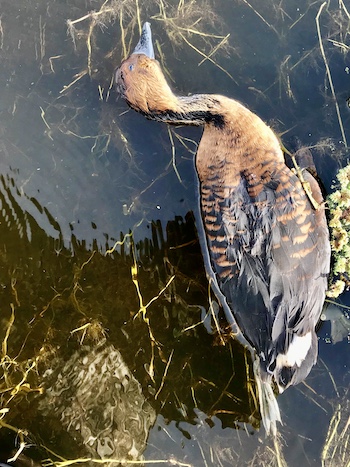
Fulvous whistling ducks in the southeastern US are associated with rice production and have slowly migrated to areas that have plentiful rice fields. This may likely be an instance of preference versus availability, because rice-field habitat most resembles their preference for moist-soil and emergent marsh wetlands (nowhere have I yet witnessed greater fulvous whistling duck densities than in remote, emergent marsh habitats in Argentina). Shallow freshwater, whether natural or manmade with an abundance of desirable vegetation and invertebrates seems to be the ticket. Unlike black-bellied whistlers, the Fulvous Whistling Duck primarily filter-feed in areas with fine mud, filtering to find seeds and invertebrates. Other than rice, fulvous whistling ducks will eat seeds of wheat, sedges, spearwort, insect larvae, earthworms, and other invertebrates.
Per personal communications with US biologists, too little is known about North American fulvous whistling duck population trends. For the avid waterfowl species collector, the fulvous whistling duck represents one of the most challenging North American ducks to attain. Natural emergent marsh areas in central Florida seem to hold localized concentrations year-round, and they’re seasonally available in the rice fields and marshes associated with southwest Louisiana to southeast Texas. Is the Gulf Coastal US or even North America the farthest northern reaches of their distribution, did their population wither with declining rice production in key areas, or has it always been a low abundance North American species? And where exactly do migratory Gulf Coastal fulvous whistlers migrate? Even in Mexico harvesting fulvous whistling ducks is a rarity.
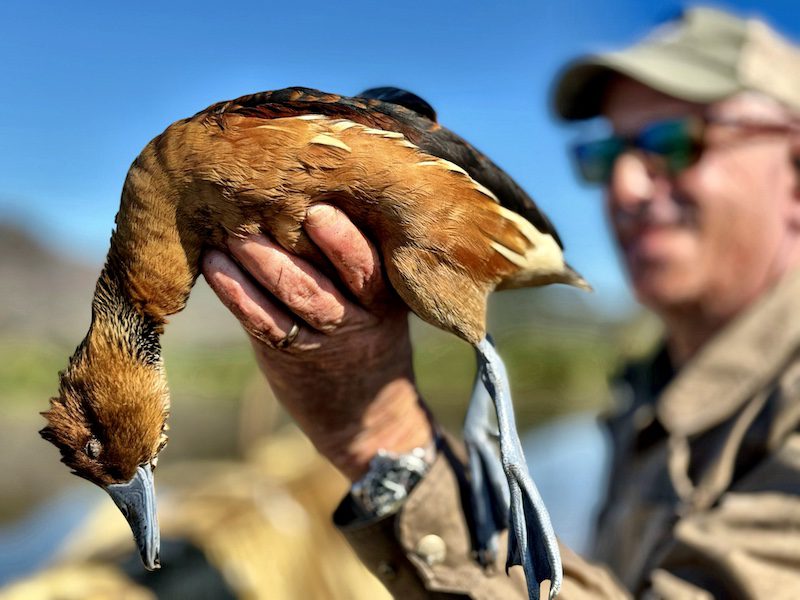
FINALLY FULVOUS (IN NORTH AMERICA). “Please Dear Lord let them turn this way,” I first thought, then said out loud. The pair circled wide, headed our way, then faded, circled back again flying left to right, a tad wide but not too much so, falling back bird first and first bird last with successive splashes. Just another couple marks, Char quickly returned with each butterscotch beauty, the elongated flank feathers absolute magic. Lots of black-bellied whistling ducks this morning, their cee-dee-cee calling piercing the air in all directions at dawn. Fulvous whistlers mostly overwinter in central Mexico, have been told, and the few seen this morning stayed too tall, too wide. Until this pair. Have shot many in Argentina’s northern marshes, and they’re also in South Africa. Interestingly, they’re all the same subspecies worldwide. Never closed the deal in North America. Until this morning.

